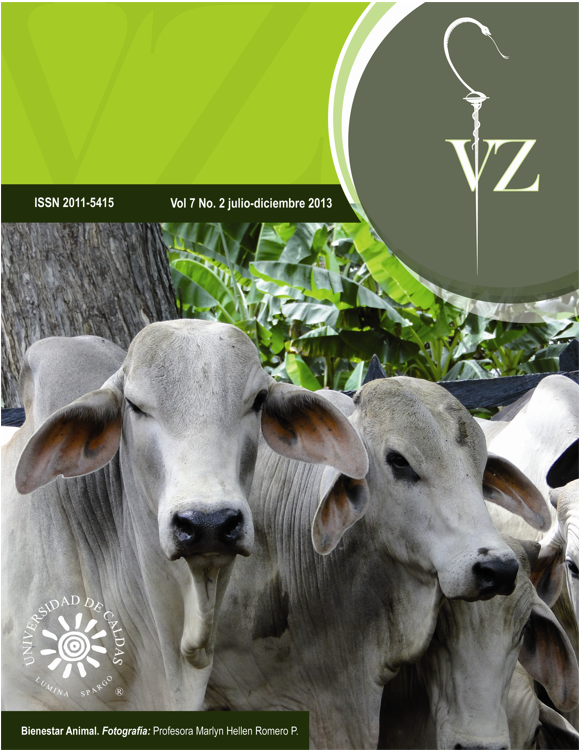Authors
Abstract
ABSTRACT: To determine the nutritional requirements of TSAA for semi-heavy laying hens estimated by regression models and LRP (linear response plateau).288 semi-heavy laying hens distributed in six treatments were fed from week 22 to week 38 with a basic diet containing 14.4% crude protein to which levels of DL-methionine was added (0.00; 0.05;0.10; 0.15; 0.20; and 0.25) in order to obtain treatments with 0.484, 0.534, 0.584, 0.634, 0.684, and 0.734% TSAA contents. Theincrease in the level of TSAA in the diet from 0.484 to 0.734% showeda quadratic effect on egg production, egg weight, egg mass, and feed conversion. A linear effect on the internal quality of the egg was also observed when measuring theHaugh units and the albumen index. Using single-slope, broken line methodology, the minimal levels of TSAA which maximized egg production, weight, and mass, and showed the best feed conversion were 6.72, 6.68, 6.72, and 6.82 g/kg of food respectively. In summary, the increase of TSAA using synthetic methionine significantly improved performance of eggs laying hens. Because of this reason semi-heavy egg laying hens required 6,735 g TSAA/kg of foodor 775 mg TSAA per hen daily from 22 to 38 weeksof age (with daily feed consumption of 115 g).
Keywords
References
Baker, D.H. Ideal amino acid patterns for broiler chicks. In: D’Mello, F.JP. (Ed). Amino Acids in Animal Nutrition. 2nd ed. Wallingford: CAB International, 2003. p.223-235.
Baker, D.H.; Batal, A.B.; Parr, T.M. et al. Ideal ratio (relative to lysine) of tryptophan, threonine, isoleucine and valine for chicks during the second and third week of life. Poultry Science, v.81, p.485-494, 2002.
Baker, D.H.; Fernandez, S.R.; Webel, D.M. et al. Sulfur amino acid requirements and cystine replacement value of broiler chicks during the period three to six weeks posthatching. Poultry Science, v.75, n.6, p.737-742, 1996.
Bertram, H.L.; Danner, K.J.; Jeroch, H. Effect of DLmethionine in a cereal-pea diet on the performance ob brown laying hens. Arch Geflügelk, v.59, 1995, p.103- 107.
Cao, Z.; Jevne, C.J.; Coon, C.N. The methionine requirement of laying hens as affected by dietary protein levels. Poultry Science, v.71, 1992 (suppl.39).
Emmert, J.L.; Barker, D.H. Use of the ideal protein concept for precision formulation of amino acid levels in broiler diets. Journal of Applied Poultry Research, v.6, p.462-470, 1997.
Harper, A.E. Amino acid imbalances, toxicities and antagonisms. Nutr Rev, v.14, n.8, p.225-227, 1956.
Harper, A.E.; Benevenga, N.J.; Wohlhueter, R.M. Effects of ingestion of disproportionate amounts of amino acids. Physiological Reviews, v.50, n.3, p.428- 558, 1970.
Liu, Z.; Wu, G.; Bryant, M.M. et al. Influence of added synthetic lysine in low-protein diets with the methionine plus cysteine to lysine ratio maintained at 0.75. Journal of Applied Poultry Research, v.14, n.1, p.174-182, 2005.
Lohmann Tierzucht GMBH. Lohmann Brown Management Guide. Germany: German Lohmann Tierzucht GmbH, 2005.
Morris, T.R. The interpretation of response data from animal feeding trial. In: Cole, DJA & Haresign, W. (Eds). Recent Developments in Poultry Nutrition 2. Boston: Butterworths, 1989. p.1-11.
Novak, C.; Yakout, H.; Scheideler, S. The combined effects of dietary lysine and total sulfur amino acid level on egg production parameters and egg components in Dekalb Delta laying hens. Poultry Science, v.83, n.6, p.977-984, 2004.
NRC, National Research Council. Nutrients Requirements of Poultry. Washington D.C.: National Academic Press, 1994.
Parr, T.M.; Kerr, B.J.; Baker, D.H. Isoleucine requirement of growing (25 to 45 kg) pigs. Journal of Animal Science, v.81, n.3, p.745-752, 2003.
Robbins, K.R.; Norton, H.W.; Barker, D.H. Estimation of nutrient requirements from growth data. The Journal of Nutrition, v.109, p.1710-1714, 1979.
SAS Institute Inc. SAS® user’s guide: Statistics, Version 5.0. Ed. Cary, NC, USA, SAS Institute Inc., 1996. 956p.
Schutte, J.B.; De Jong, J.; Bertram, H.L. Requirement of the laying hen for sulfur amino acids. Poultry Science, v.73, n.2, p.274-280, 1994.
Schutte, J.B.; Van Werdem, E.J. Requirement of the hen for sulphur containing amino acids. British Poultry Science, v.19, n.5, p.573-581, 1978.
Wu, G.; Bryant, M.M.; Roland, D.A.Sr. et al. Effect of synthetic lysine on performance of commercial Leghorns in Phase II and III (Second Cycle) while maintaining the
Methionine+Cysteine/Lysine ratio at 0.75. Poultry Science, v.84, p.2-22, 2005a (suppl.43).
Wu, G.; Bryant, M.M.; Voitle, R.A.; Roland, D.A.Sr. Effect of dietary energy on performance and egg composition in Bovans White and Dekalb White in Phase I. Poultry Science, v.84, n.10, p.1610-1615, 2005b.

 PDF (Español)
PDF (Español)
 FLIP
FLIP










